#Excel Aviation services
Explore tagged Tumblr posts
Text
The Best Quality Private Jet Rental Company in India : Excel Aviation Services
Excel Aviation Services stands at the pinnacle of a private jet rental company in India, delivering unparalleled luxury, convenience, and reliability to discerning travellers. Modern aircraft in our large fleet are extremely maintained to the highest possible level of performance and safety. Whether you're jetting off for business meetings or leisurely getaways, we offer bespoke solutions tailored to your unique requirements.
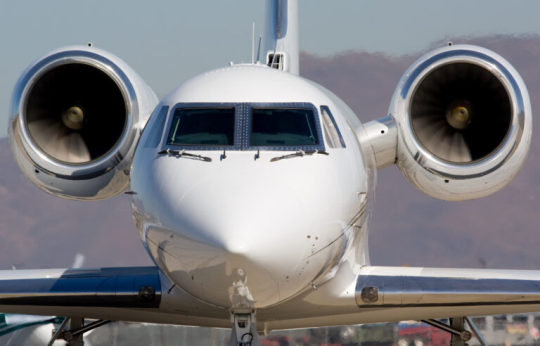
At Excel Aviation Services, we prioritize customer satisfaction above all else. Our skilled team of experts makes sure that every detail of your trip from easy booking procedures to individualized in-flight amenities is carefully planned and carried out to perfection. With our commitment to excellence, we guarantee a superior travel experience that exceeds expectations.
#private jet#private jet rental in delhi#private aviation company in india#private jet for rent in india#private jet in india#charter flight india#air charter services in delhi#air travel#Excel Aviation services#India#Delhi
1 note
·
View note
Text
Mastering the Emirates Cabin Crew Open Day: Key Traits Recruiters Search For
Imagine stepping into the shoes of a recruiter for Emirates, one of the world’s most luxurious airlines, tasked with identifying candidates who don’t just meet the criteria but truly stand out as potential ambassadors for the brand. This perspective sheds light on what it takes to excel at an Emirates Cabin Crew Open Day. The event is more than a job interview; it’s a golden opportunity to…
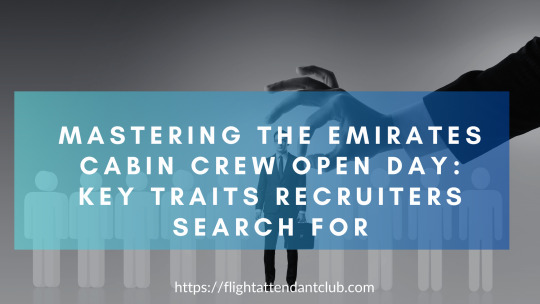
View On WordPress
#Airline Jobs#aviation careers#Cabin crew recruitment#Customer Service Excellence#Emirates Cabin Crew#Interview Preparation#Professional Grooming#Teamwork Skills
2 notes
·
View notes
Text


FLIGHT ATTENDANT OBSERVATIONS ✈️ .
Kurchenko (2349) Persona Chart
Sun 10H: Being a flight attendant could feel like a natural calling or career path. You shine in this role, and others admire your professionalism and grace in the workplace.
Moon 4H: You may feel emotionally connected to the idea of travel but find comfort in creating a “home-like” environment while in the air. The emotional bonds you form with passengers or crew are meaningful.
Rising in Sagittarius: You embody a free-spirited, adventurous energy. Others see you as someone who loves to explore new cultures and embrace different perspectives.
Venus 1H: You have an aesthetically pleasing presence, which could be part of your charm as a flight attendant. People may find you graceful and approachable, making you excellent at customer service.
Mercury 3H: Communication is a key strength. You’re skilled at giving clear instructions and resolving misunderstandings. You may also enjoy learning multiple languages or engaging with diverse groups of people.
Jupiter 6H: You thrive in service roles and could find immense joy in helping others during their travels. The work may bring opportunities for personal growth and global exploration.
Mars 11H: You’re motivated by teamwork and camaraderie. You likely enjoy working with a crew and feel energized by the shared mission of ensuring a smooth flight experience.
Saturn 7H: Partnerships are vital in your career. You may develop long-lasting professional relationships with colleagues or feel a deep responsibility toward passengers.
Chiron 9H: Travel might be a healing experience for you, or you could inspire others through your personal travel stories and compassionate service.
Kurchenko conjunct Sun: Being a flight attendant could feel deeply tied to your identity. It may bring you pride and recognition.
Kurchenko in 9H: Your love for travel is undeniable. You may feel a spiritual connection to the skies or find great personal fulfillment in exploring different cultures.
Kurchenko square Neptune: You might struggle with daydreaming about travel versus the realities of the job (e.g., long hours or stress). Maintaining balance is important.
Kurchenko trine Uranus: Innovation is your strong suit. You could be open to changes in aviation technology or quick to adapt to unexpected situations during flights.
Kurchenko sextile Venus: You likely excel at making passengers feel cared for. You might also enjoy the luxurious or glamorous side of being a flight attendant.
Kurchenko conjunct 7H: A relationship with a pilot could feel destined or fated in some ways. You could have a strong connection, and their profession might excite you, but you may also face unique challenges due to your shared work environment
Kurchenko in 1H: Your appearance and personality may naturally attract attention. Passengers might find you charismatic, and you could often get hit on during flights. You might come across as approachable and friendly, making it easier for others to flirt with you
Kurchenko 1H: Your presence as a flight attendant is memorable. People might associate you with the travel lifestyle, and you might often get compliments on your demeanor or look in uniform.
Kurchenko square Sun: You may feel that this career path doesn’t align with your true self or that it overshadows other aspects of your identity
Kurchenko 6H: You excel in the service aspect of the job. This placement suggests you are organized, reliable, and focused on creating a positive travel experience for others.
Kurchenko square Moon: Emotional stress could come from the job. You may find it hard to manage your emotions during long flights or when dealing with demanding passengers
Kurchenko 8H: Your work as a flight attendant might feel transformative. You could enjoy diving into the unknown and dealing with situations that require resourcefulness, such as managing turbulence or handling emergencies. This placement also indicates you might keep some emotional depth or personal experiences private while at work.
Kurchenko 10H: Your career as a flight attendant could bring public recognition or admiration. You’re likely seen as a role model or someone who takes their role seriously and excels in it.
Kurchenko 7H: Partnerships play a significant role in your career. You may build strong connections with your coworkers, or your future spouse/partner may also share an interest in travel or aviation.
#astrology#synastry chart#astro observations#beauty astrology#composite chart#natal chart#flight attendant#persona chart
139 notes
·
View notes
Text
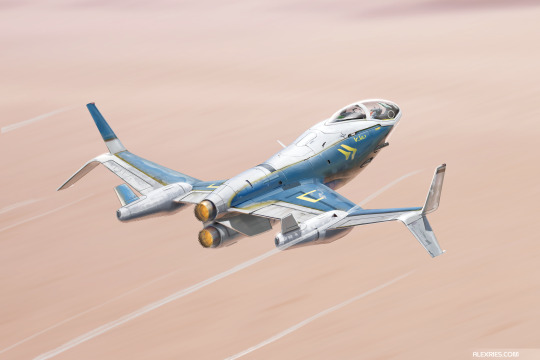
The Tandem Call was a small fighter developed by over-eager birrin engineers as a way to relearn aviation knowledge lost in the Fall. A variety of unconventional control surfaces, including split ailerons and moving winglets, were all tossed into this single airframe to test several aerodynamic concepts. The team never expected that the Tandem Call would ever fire a shot in anger.
In its test bed role weapons, including a powerful cannon, were added. Onboard magazines and under-wing stores could carry a variety of experimental guided and unguided munitions for use on Kiln test ranges. The bubble canopy gave the pilot excellent visibility, but the Tandem Call lacked radar. This shortcoming was partly rectified when the Reclamation wars began with a detachable underwing sensor pod.
During development the team was also only given surplus small jet powerplants: a second turbine was added in ventral pod when the vehicle was found to be underpowered in combat tests, though this could be easily removed for non-combat reconnaissance missions to increase endurance. This pod necessitated the addition of longer landing gear housed in nacelles extending beyond the wing trailing edge.
Despite the idiosyncratic design, the Reclamation wars pulled the Tandem Call into service, its potent cannons felling slower enemy aircraft and strafing ground targets.
Despite its experimental nature, the vehicle was put into serial production to fulfil the need for air power in the explosively escalating conflict, giving rise to a legendary group of pilots who were able to use the idiosyncratic aircraft to great effect against what were increasingly sophisticated adversaries
393 notes
·
View notes
Text
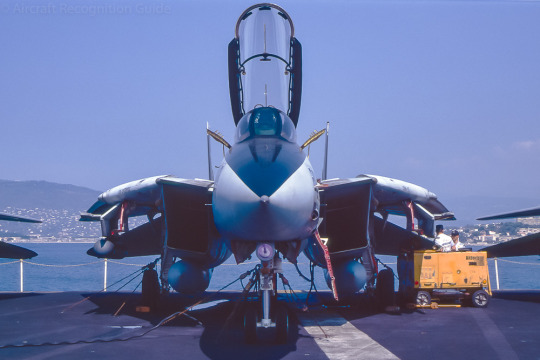
The F-14 Tomcat
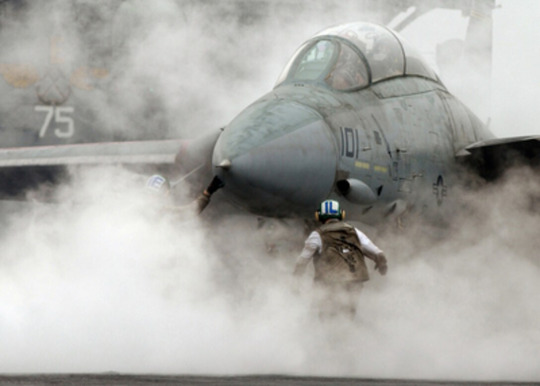
The F-14 Tomcat, an iconic American supersonic fighter jet, gained fame for its swing-wing design and role as a carrier-based interceptor. Developed by Grumman for the US Navy, it entered service in 1974 and was retired in 2006.
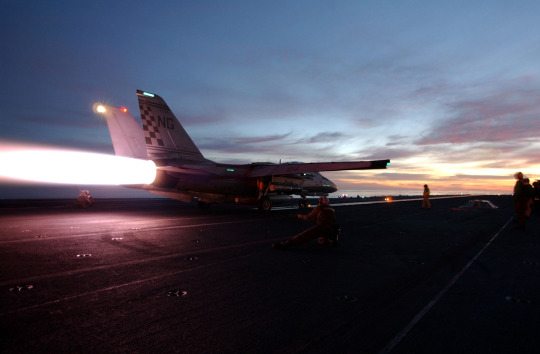
The F-14 Tomcat garnered notable performance records during its illustrious service. In 1974, an F-14A set a world speed record, reaching 1,606.342 miles per hour (2,585.086 kilometers per hour) over a 500-kilometer closed-circuit course. Its remarkable speed capabilities were underscored by its ability to exceed Mach 2.
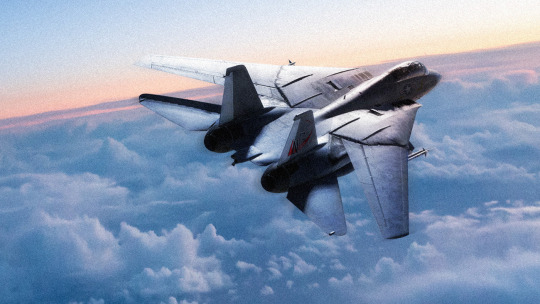
In combat, the F-14 demonstrated exceptional effectiveness, participating in pivotal military operations such as the Gulf War and Operation Enduring Freedom. Its swing-wing design and Pratt & Whitney TF30 turbofan engines endowed it with agility and versatility, enabling precise maneuvering and long-range engagements.
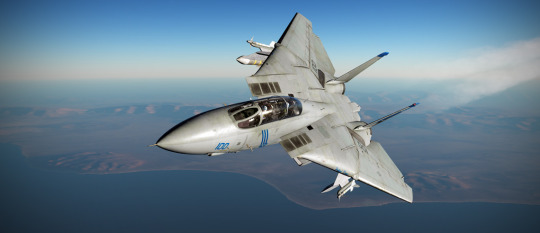
Armed with radar-guided missiles and a powerful radar system, it was designed for air superiority and fleet defense. The Tomcat played a crucial role in various conflicts, including the Gulf War. Its advanced avionics and long-range capabilities made it a formidable adversary.
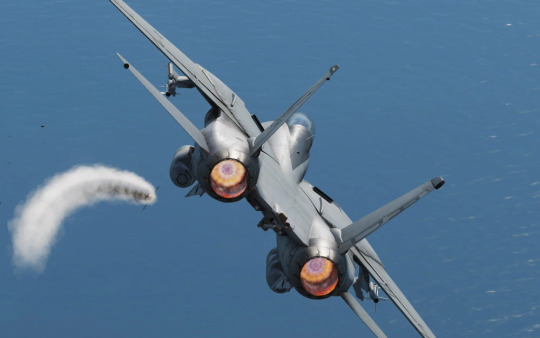
The F-14's advanced radar systems, including the Hughes AN/AWG-9 and later the AN/APG-71, facilitated multi-target tracking and engagement, particularly with the AIM-54 Phoenix missile system.
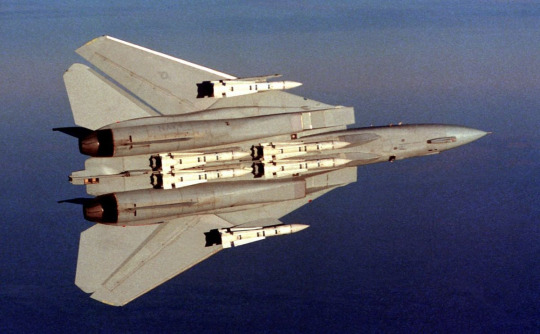
Beyond its performance in flight, the F-14 left an indelible mark on popular culture, immortalized in the film "Top Gun." Its enduring legacy as a symbol of American military power and aviation excellence continues to captivate enthusiasts and historians alike.
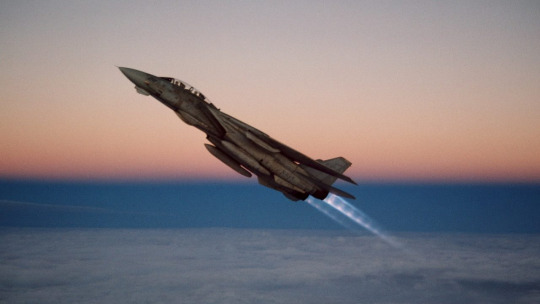
Though retired, its legacy endures as a symbol of naval aviation prowess and technological innovation.
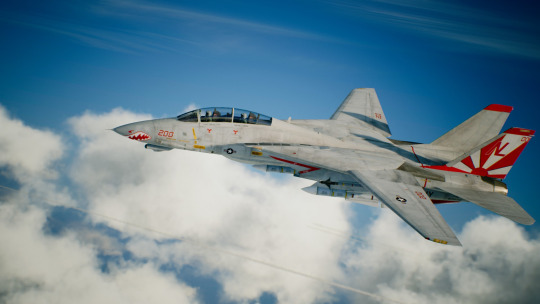
147 notes
·
View notes
Text
The Women's Airforce Service Pilots (WASP): Soaring Through Gender Barriers 🛩🐝
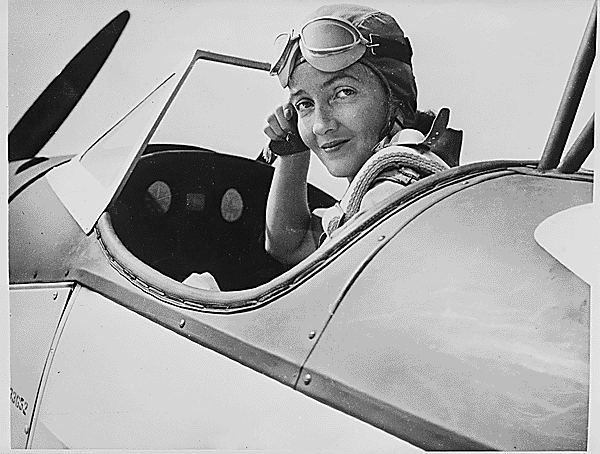
During World War II, while the world battled on various fronts, a quieter revolution took flight in the United States. The Women's Airforce Service Pilots, or WASP, were a pioneering group of female aviators who defied traditional gender norms, proving that women could excel in roles historically reserved for men.
Origins of the WASP

With many American men serving overseas, the country faced a need to tap into underutilized domestic resources. The WASP program, initiated in 1943, merged two existing women's flying programs: the Women's Flying Training Detachment (WFTD) and the Women's Auxiliary Ferrying Squadron (WAFS). These women, under the guidance of aviators like Jacqueline Cochran and Nancy Love, would play a critical role in the war effort.
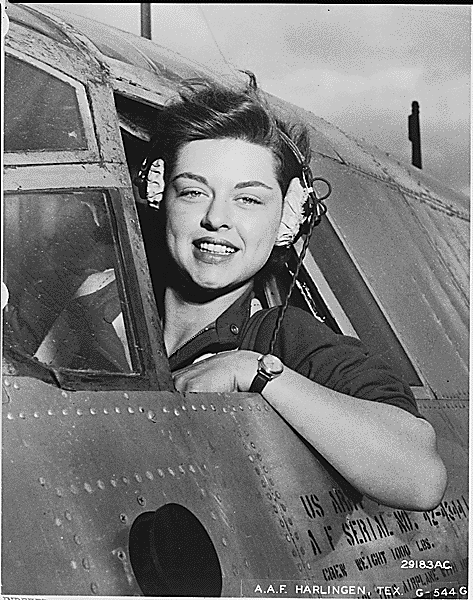
Duties and Contributions
The WASPs were trained pilots who contributed in non-combat roles. They ferried military aircraft across the country, tested planes, instructed male pilots, and even towed targets for live anti-aircraft artillery practice. They fulfilled the non-combat roles formerly occupied by male pilots, so more male pilots were available for combat roles. Women were not allowed to fly combat missions until [many years later, in 1993.. By the end of the war, WASPs had flown every type of military aircraft, logged over 60 million miles, and transported nearly 12,650 aircraft of 78 different types.
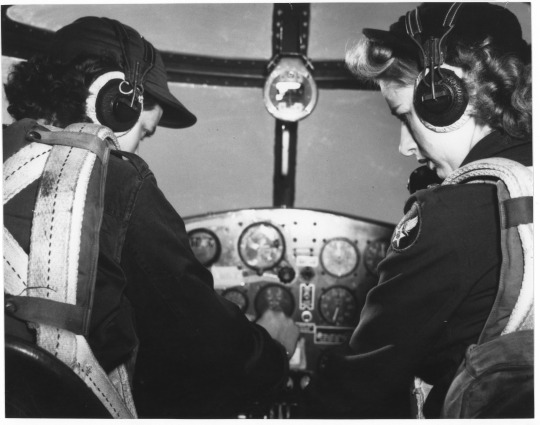
Challenges and Gender Biases
Despite their significant contributions, WASPs constantly faced skepticism and discrimination. They weren’t considered members of the military but were seen as civil service employees. They had to pay for their own uniforms, lodging, and sometimes even their way home after the end of their service. If a WASP pilot died during service, her burial costs fell on her family or fellow pilots.
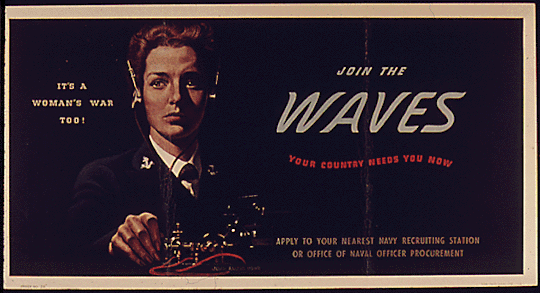
Recognition and Legacy
In 1977, after years of advocacy by WASP veterans, President Jimmy Carter signed legislation granting WASP pilots veteran status. Later, in 2009, they were awarded the Congressional Gold Medal for their service, sacrifice, and pioneering spirit. The legacy of the WASP program not only paved the way for women's integration into the U.S. Air Force but also demonstrated the capabilities of women in high-pressure, technical roles.
239 notes
·
View notes
Text
Horizon
Back with more DRA ponies folks (Woohoo!) It's been a bit...

It's Haru's turn! I made him a pegasus (naturally) though he does have a little griffin ancestry in there somewhere. This contributes to his coat/mane being a little feathery in places and him having wings more suited for gliding/long distance.
Horizon is an experienced flier, who has broken a few records for flight distance and duration. He once flew all the way across one side of Equestria to the other, and is somewhat known in aviation circles for these feats.
He loves being in the sky, and sometimes hovers above conversations purely because he likes his hooves being off the ground. This extends not only to his own wings, but also various aircraft, as Horizon is an excellent pilot. He has experience with hot-air ballooning, pegasi-drawn chariots, and even sky-diving and parachutes. His skill with even the highest altitudes makes him the perfect partner for less experienced fliers, or spotter for those attempting more risky endeavors.
Horizon has also spent a lot of time piloting airships, and often offers his services to Stardust Industries. He was very excited to be one of the first pilots for Gizmo's newest creations, and helped iron out many of the kinks and test the airships' endurance, stability, and safety.
He is part of another friend group, which I am working on doing next. They all live in the same town, but Horizon travels a lot for his work, and besides knowing Thrift and Gizmo, has met a few of the other cast members just because of that.
He and Thrift get along really well, and Thrift is basically an honorary member of Horizon's friend group too at this point. One of his other close friends gave him the nickname "Hori-zing" and sometimes Hori is used, but most ponies call him Horizon.
#danganronpa another#dra1#enquire's dra ponies#dra1 fanart#enquire art#mlp art#mlp crossover#mlp fim#my little pony#haruhiko kobashikawa#mlp g4#mlp#danganronpa another despair academy#danganronpa fangame#fanganronpa#danganronpa crossover#fangan character#danganronpa fangan#his colors were kind of hard to figure out#but i think this suits him well#little light on the background for him cause Haru doesn't have a whole lot family wise#might add more to that as other characters are added#character design#character art#pony designs
40 notes
·
View notes
Text
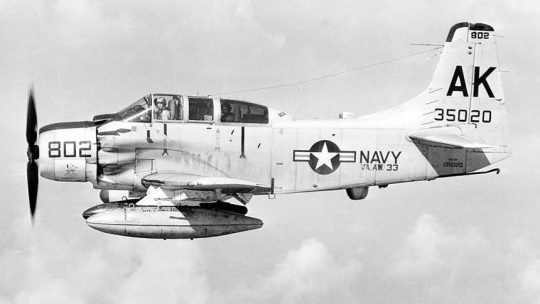
The AD-5N ‘Skyraider’ and Its Little-Known Nuclear Role in the Cold War
David Cenciotti
AD-5N
In late 1958, during heightened tensions in the Taiwan Strait, Skyraider pilots were prepped for nuclear strike missions. They spent tense hours at night, seated in their aircraft and ready for catapult launch with nuke bombs, before the mission was ultimately called off…
The Douglas A-1 Skyraider, also known as the “Spad,” was a legendary single-engine aircraft, as well as the last propeller U.S. Navy attack aircraft to disappear from the decks of the Navy’s aircraft carriers.
In late 1958, during heightened tensions in the Taiwan Strait, Skyraider pilots were prepped for nuclear strike missions. They spent tense hours at night, seated in their aircraft and ready for catapult launch with nuke bombs, before the mission was ultimately called off…Nuclear attack Skyraider
Renowned for its rugged design and long endurance, the Skyraider had an exceptional payload capacity: even when it carried its full internal fuel of 2,280 pounds, a 2,200-lb torpedo, two 2,000-lb bombs, 12,5 inch rockets, two 20 mm guns and 240 pounds of ammunition, the Skyraider was still under its maximum gross weight of 25,000 pounds.
Conceived during World War II, the Skyraider saw extensive service during the Korean and Vietnam Wars, excelling in close air support, search and rescue, and interdiction roles. However, its ability to carry a diverse array of munitions, including conventional bombs, rockets, and even torpedoes, made it a versatile platform.
AD-5N
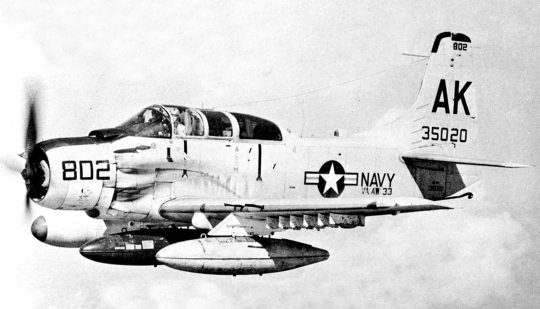
Douglas AD-5N Skyraider of VA(AW)-33 Det.42 circa in 1958 (Image credit: U.S. Navy)
Among its variants, the AD-5N was a specialized version of the Skyraider, featuring a widened fuselage to accommodate a crew of four and advanced avionics for precision operations in challenging conditions.
Nuclear attack Skyraider
At the end of the 1950s, pilots of VA(AW)-33 flew AD-5N aircraft off the USS Essex, primarily training for nuclear strike missions. They specialized in low-level, long-range operations, using tech like the Bureau of Ordnance Atomic Rocket (BOAR) rocket and the Low Altitude Bombing System (LABS) bombing system.
Flying just 50 feet above water or skimming treetops on land, missions were top-secret, with each pilot assigned a unique target. Crews of three or four included electronics techs, practicing whenever budget allowed, both in the U.S. and Europe. Real missions were essentially one-way, though their rocket-powered weapon offered a slight survival edge.
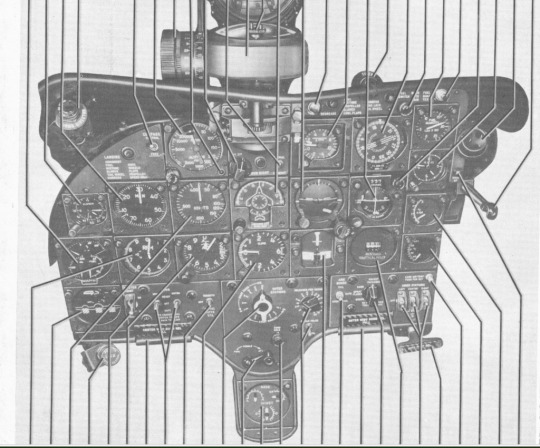
The pilot’s side panel on the AD-5N aircraft. The LABS timer light can be seen on top of the panel on the right side and the NAV/LABS cross pointer instrument is also on the right side, about half way down. (Image via Stephen Miller)
Stephen Miller is a retired electrical engineer, lifelong aviator who spent some time as a Naval Aviator. After flight training, he was assigned to VA(AW)33 in Atlantic City, NJ, flying AD-5N. Here’s what he wrote to us about his time flying the low level long range nuclear weapon delivery mission with the Skyraider.
I joined the Navy right after graduating from Miami of Ohio with a BS in business and was just a few hours short of a commercial certificate at that time. After flight training, I was assigned to VA(AW)33 flying AD-5N in 1956.
In 1957-1958 various detachments consisting of four aircraft were assigned to their respective carriers and were involved in the attendant cruises from time to time. Ours was the USS ESSEX, CVA9. This was strictly during the cold war, between the Korean war and Vietnam.
Our primary mission was low level long range nuclear weapon delivery. This consisted of 50 ft over water and about 150 ft over land (treetop level). All navigation was done using pilotage/dead reckoning and was practised both here and in Europe. There were no radars at that time that could detect a low flying aircraft, due to ground clutter. Our long range cruise airspeed was 160 kts and we’d wait for the engine to sputter before switching back from an empty drop tank to the main. We typically used one or two crewmen to help with the navigation, the same guys (ET’s, Electronic Technicians) who maintained the equipment.
We also had a ground mapping radar, the APS-31, a pod-mounted wing unit.
In mid 1957 we attended a special weapons school in Norfolk VA which covered the operation of the weapon, the Bureau of Ordnance Atomic Rocket (BOAR) and the Low Altitude Bombing System (LABS). They had a working BOAR in the classroom, minus the warhead and we learned how to connect and use the test box to check it out. I was scheduled to make a test run to a simulated target with a live BOAR which had the 1000 lbs of HE (high explosive) used to detonate the nuclear core, but without the core installed. This was ultimately cancelled, but the exercise proceeded without employing the BOAR.
The delivery sequence worked as follows: The LABS contained a timer, accelerometer and a precise gyro heading reference. Just before reaching the IP (initial position for starting the final run toward the release point), the aircraft had to be at max speed (about 240 kts), full or “military” power, limited to five minutes, on heading and maintaining a stable treetop altitude, with the weapon armed.
Upon passing the IP a button on the stick was pressed and the timer would start for the 2-3 minute run. Simultaneously, the vertical nav indicator normally used for VOR/TACAN/ILS LOCALIZER was switched to provide the precise heading reference. At the same time a short panel light and headset tone were activated as well.
When the timer ran out, another short light/tone indicated the aircraft had reached the point to start the launch maneuver. The pilot would then pull and hold the trigger while pulling the nose up in a precise manner using the accelerometer. The horizontal nav indicator normally used for the ILS GLIDESLOPE would switch to this function and initially drop down; it was up to the pilot to raise the nose smoothly to bring the indicator to the center (horizontal) position. This would insure the right amount of “g’s” to produce the desired weapon trajectory upon release, which was automatic when the release attitude was reached.
The BOAR was blown away from the aircraft by the equivalent of four shotgun shells and had a pigtail attached to the airframe which would stretch out and then pull out of the back of the weapon, starting the rocket motor. This weapon had a top speed in the 400kt range and covered a distance of about 7.5 miles.
At this point the AD-5N was entering the initial entry into a loop but was too slow to make it over the top, requiring a wing over to end the maneuver, pickup speed and reverse direction. This was a modified version of a maneuver called a “half Cuban 8”, in this case known as the “idiot loop”.
For propeller driven aircraft the completion of the loop was only possible by a more capable airplane like the single seat AD6, for example. Use of a rocket powered weapon would allow the aircraft to escape the blast zone but the enormous shock wave would have unpredictable results. Some nuclear weapons were unpowered bombs, such that no escape from the blast was possible if delivered in this manner by a propeller driven aircraft. No one was expected back from these missions. Fortunately it never became necessary.
On a Mediterranean cruise during the 1957-58 period we did have a night drill to get a live BOAR ready for launch, but that’s as far as it went, at least for our squadron. At one point we were each assigned top secret targets following background checks for this purpose. These targets were planned and the charts supplied by some unknown source, at least to us, and the zig-zag routes highlighted as well. My best guess is this came from the Pentagon. They were kept in a locked safe with individual combinations. We were required to study our respective routes in our spare time and no one knew what anyone else’s target was. These were strictly visual day missions, though we would probably launch at night in time to reach the beach by daylight. We did have the advantage of radar assist, at least to pick out prominent features like lakes/rivers etc, as well as crewmen to help look for check points. The biggest problem we faced was the fact that the charts over enemy territory were known to contain errors. This only added to the difficulty of attempting to navigate using pilotage/dead reckoning at treetop level in the first place!
In late 1958 during the Quemoy/Matsu island crisis, we were in that area and a friend of mine was there as well with a Pacific fleet squadron flying AD6’s. He sat for two hours on a dark night in his aircraft, hooked up to the catapult, ready to launch with a nuke until they finally called it off. I doubt that this is widely known. That nuclear bomb was a Mark 7 unpowered device. It was a standard nuclear bomb of that time, the yield determined by the size of the nuclear core. A typical mid range core was 18-22 kilotons, about the same as the one dropped on Nagasaki.
Other Navy/Air Force squadrons flying various types of aircraft (primarily jets) had other delivery methods as well. This was our particular experience.
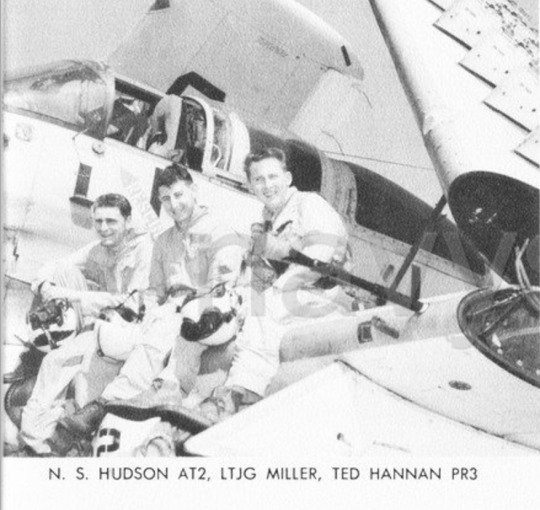
LTJG Miller (via Stephen Miller)
After his tour as a naval aviator Stephen spent a few years in aviation doing charter and flight instructor work flying all the usual single/multi engine aircraft, a stint with Mohawk Airlines flying Convair 240/440 aircraft and ultimately had his own business as an FBO.
I eventually left the aviation industry to pursue a degree in electrical engineering, though I continued flying part time, graduating from Umass Dartmouth in 1967. My career as an engineer subsequently encompassed working for a variety of employers in both design and management, commercial and military and for both large and small firms. My duties often included serving as company pilot as well. One such firm was an autopilot manufacturer which introduced me to that particular industry as well.
In later life I spent some time with the CAP, but now at age 90 I haven’t been current for about 20 years. Hopefully, the information I’ve submitted will be of some historical value to those interested in the Cold War period of the 1950s.
@The Aviationist.com
24 notes
·
View notes
Text
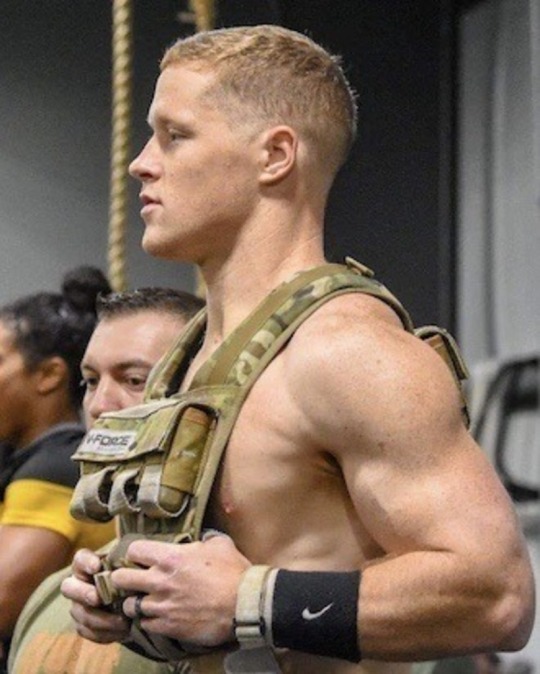
U.S. Army Warrior Fitness Team Member
Capt. Brian Harris
Capt. Brian Harris, was born in Edmond, Oklahoma and graduated from Edmond North High School in 2009. He was a member of the high school’s baseball and wrestling teams throughout high school. He enlisted in the Oklahoma Army National Guard in August of 2009 as a firefinder radar operator (13R) in field artillery. While serving in the Guard from 2009 to 2013, Harris attended the University of Oklahoma and actively participated in the Army ROTC program. During this time, he was introduced to functional fitness and began competing at a high level at various competitions around the country. In 2013, Harris commissioned into the Regular Army as a Medical Service Corps officer and that year was selected as one of twenty two medical service officers to attend flight training and be trained as an aeromedical evacuation officer (67J) / UH-60 Blackhawk helicopter pilot.
Harris’ assignment history includes Fort Rucker, Alabama where he attended Army flight school followed by Fort Carson, Colorado as a section leader, platoon leader and staff operations officer for the 2nd General Support Aviation Battalion, 4th Combat Aviation Brigade. During his time with 4th CAB, Harris participated in several full-scale training exercises and served one nine-month deployment to Afghanistan in support of Operation’s Freedom Sentinel and Resolute Support providing aeromedical evacuation services across RC-East and RC-North. In 2016, he was named the 4th Infantry Division’s “Junior Officer of the Year” for his efforts both in combat and garrison. After his time in Colorado, Harris returned to Fort Rucker to serve as the operations officer for their Air Ambulance Detachment (110th Aviation Brigade) known as “Flatiron” providing 24/7 crash rescue support to the Aviation Center of Excellence, as well as, routine support to 6th Ranger Training Battalion at Eglin Air Force Base and support to the local civilian population in accordance with the Wiregrass Letter of Agreement.
Harris is a CrossFit Level 2 certified trainer and master fitness trainer (phase 1) and has accumulated more than 700 hours of one-on-one and group coaching time teaching functional fitness methodologies to servicemembers and civilians enabling them to reach their fitness and lifestyle goals. He has competed at the local, regional and national level in functional fitness competitions. Under the old CrossFit season format, Harris was a 2 time regional qualifier and recently represented the United States of America as a member of the national team at the International Federation of Functional Fitness World Championships in Malmo, Sweden (2018).
His awards and decorations include the Air Medal with “C” device, Air Medal, Army Commendation Medal with 2 bronze oak leaf clusters, Army Achievement Medal with 3 bronze oak leaf clusters, Meritorious Unit Citation (2-4 GSAB, 4CAB), National Defense Service Medal, Afghanistan Campaign Medal, Global War on Terrorism Service Medal, Army Service Ribbon, Overseas Service Ribbon, NATO Medal, Combat Action Badge, Basic Army Aviator’s Badge, Parachute Badge, and the Air Assault qualification badge.
74 notes
·
View notes
Note
I’ve been fixating on COD for a while and was wanting to get more information about military things. Mostly such as wording and stuff! Do you know of anything where I can fully fledge out my hyper-fixation and satisfy the need to learn more about military?
Unfortunately, I haven’t found any end-all-be-all military resources that give you anything and everything you want to know. All of my research has been cobbled together from countless different sources, including official military websites (which are surprisingly forthcoming with certain information, if you’re willing to wade through the propaganda to find it), youtube (again, be wary of propaganda, but you can find countless former and active service members talking about their experiences), and various reddit forums.
I have two major lists of resources, one for more general military knowledge and one comprised entirely of declassified military documents, so I’d recommend those as a starting point. If you’ve got any specific questions, I’d always be willing to do a deep dive to find the answers! Additionally, google is your friend for super niche topics; somewhere out there, a military spouse has asked the exact same question on a random reddit page and has supplied the CoD fandom with invaluable information.
As for military wording, here’s an overview of some common military slang, more focused on the US military, but still a good beginning resource, as well as this wiki glossary of military slang terms. Here’s another glossary of military jargon, again more US-centric. If you’re looking for British-specific military jargon, here’s the wiki glossary for that!
Here’s the wiki page for Procedure Words, also called Prowords, which are the shorthand words used for communication over radio. The 141 would likely not use the aviation or marine prowords, but the rest seem incredibly likely to be in their daily vocabulary. Here is an entire PDF of abbreviations used in UK Ministry of Defense documents, which is an excellent resource to have while both writing and researching (because I can’t count the number of times I’ve had to look up an acronym mid-fic or elbow-deep in a declassified document).
This is also an open invitation for anyone to link any particularly helpful resources they’ve found! I hope this helps!
#call of duty#cod#thanks for the ask!#sadly general military knowledge is kept pretty broken up; there isn’t really a huge google doc anywhere with everything in it#you really have to dig to find the good stuff#cod writing reference#military writing reference#tombstone's epitaphs
25 notes
·
View notes
Text
Very, Very Incorrect DetCo Character Name Translations
I typed a bunch of DetCo characters' names into Google translate and translated each individual kanji...this is what I got back.
Akai Shuichi - 赤井 秀一 - Red Well Hide One
Okiya Subaru - 沖矢 昴 - Oki Arrow Pleiades
Haneda Shukichi - 羽田 秀𠮷 - Wing Field Hide Yoshi
Sera Masumi - 世良 真純 - World Good True Pure
Mary Sera - メアリー 世良 - Mary World Good
Akai Tsutomu - 赤井 務武 - Red Well Service Take
Furuya Rei - 降谷 零 - Down Valley Zero
Morofushi Hiromitsu - 諸伏 景光 - Various Fold View Light
Matsuda Jinpei - 松田 陣平 - Pine Field Team Flat
Hagiwara Kenji - 萩原 研二 - Hagi Original Research Two
Date Wataru - 伊達 航 - Italy Achievements Aviation
Morofushi Taka’aki - 諸伏 高明 - Various Fold High Ming
Yamato Kansuke - 大和 敢助 - Big Sum Daring Help
Uehara Yui - 上原 由衣 - Up Original Reason Clothing
Yamamura Misao - 山村 ミサオ - Mountain Village Misao
Kuroda Hyoue - 黒田 兵衛 - Black Field Soldier Mamoru
Kazami Yuya - 風見 裕也 - Wind Look Yutaka Also
Mouri Kogoro - 毛利 小五郎 - Hair Profit Small Five Ro
Mouri Ran - 毛利 蘭 - Hair Profit Orchid
Kisaki Eri - 妃 英理 - Princess English Reason
Edogawa Conan - 江戸川 コナン - E Door River Conan
Agasa Hiroshi - 阿笠 博士 - A Hat Bo Scholar
Haibara Ai - 灰原 哀 - Ash Original Sorrow
Yoshida Ayumi - 吉田 歩美 - Lucky Field Pace Beautiful
Tsuburaya Mitsuhiko - 円谷 光彦 - Circle Valley Light Hiko
Kojima Genta - 小嶋 元太 - Small Shima Yuan Too
Miyano Elena - 宮野 エレーナ - Palace Field Elena
Miyano Atsushi - 宮野 厚司 - Palace Field Thickness Manage
Miyano Akemi - 宮野 明美 - Palace Field Bright Beautiful
Miyano Shiho - 宮野 志保 - Palace Field Zhi Save
Hattori Heiji - 服部 平次 - Clothes Department Flat Second-Rate
Toyama Kazuha - 遠山 和葉 - Far Mountain And Leaf
Suzuki Sonoko - 鈴木 園子 - Bell Wood Garden Child
Kudo Shinichi - 工藤 新一 - Work Wisteria New One
Kudo Yusaku - 工藤 優作 - Work Wisteria Excellent Do
Kudo Yukiko - 工藤 有希子 - Work Wisteria Have Nozomi Child
Amuro Tooru - 安室 透 - Install Room Through
Wakita Kanenori - 脇田 兼則 - Side Field Simultaneous But
Enomoto Azusa - 榎本 梓 - Enoki Book Azusa
Sato Miwako - 佐藤 美和子 - Zuo Wisteria Beautiful And Child
Takagi Wataru - 高木 渉 - High Wood Wataru
Megure Juzo - 目暮 十三 - Eye Twilight Ten Three
Chiba Kazunobu - 千葉 和伸 - Thousand Leaf And Stretch
Miike Naeko - 三池 苗子 - Three Pool Seedling Child
Shiratori Ninzaburo - 白鳥 任三郎 - White Bird Appoint Three Lang
Miyamoto Yumi - 宮本 由美 - Palace Book Depend On Beautiful
23 notes
·
View notes
Text
Private Jet in India
Excel Aviation Services offers premier Private Jet in India, catering to clients who value time, comfort, and luxury. Having access to a wide variety of modern aircraft, Excel Aviation guarantees that every trip is customized to match the unique requirements of its affluent clientele. From seamless booking processes and VIP concierge services to highly trained pilots and cabin crews, Excel provides an unparalleled air travel experience. Whether for business trips, urgent meetings, or leisurely escapes, Excel Aviation Services is dedicated to delivering excellence in private aviation, making every flight not just a journey but an experience.
#private jet in india#private jet#air travel#charter flight india#private aviation company in india#air charter services in delhi#private jet for rent in india#private jet rental in delhi#excel aviation services#india
0 notes
Text
2nd Lt. Janina Lewandowska — Polish World War II pilot and the only woman officer killed in the Katyn Massacre.

Janina Antonina Lewandowska was born on 22 April 1908 in Kharkiv. She was a Polish World War II pilot killed by the Soviets in the Katyn Massacre. Her father, Józef Dowbor-Muśnicki, was a Polish General. Janina Lewandowska was one of over 20,000 Polish prisoners of war murdered by Soviet troops in the Katyn Forest in an effort to eliminate Poland’s elites.
Early in life, Janina developed three major passions: flying, parachuting and singing. She was said to have been excellent at all three.
As a teenager, she joined the Poznań Flying Club and earned her glider and parachutist certificates. She learned to fly light aircraft by 1937. By age 20, she was the first woman in Europe to parachute from a height of over five kilometers. Shortly before the war began, she married instructor-pilot Mieczyslaw Lewandowski.
In August 1939, Lewandowska was drafted for service with the 3rd Military Aviation Regiment stationed near Poznań, Poland. On 22 September, her unit was taken prisoner by the Soviets. She was one of only two officers in the group; both were taken to the POW Camp for Polish Officers in Kozielsk, Russia.
2nd Lieutenant Lewandowska, née Dowbor-Muśnicka was most likely shot on 22 April 1940, on her 32nd birthday. She was the only servicewoman murdered in Katyn.
In April 1943,Janina Lewandowska's remains were uncovered by the Germans who discovered the mass graves of the Polish soldiers in the Katyn forest.
(Link)
23 notes
·
View notes
Text
UAVISUALS: Leading Australia’s Drone Inspection and Data Solutions with Precision and Innovation
Industries across Australia are transforming through the power of drone technology, and UAVISUALS stands at the forefront of this revolution. UAVISUALS offers advanced drone inspections and data solutions to enhance safety, efficiency, and data accuracy across multiple sectors. From construction and energy to environmental monitoring, UAVISUALS empowers industries to leverage aerial data insights that drive better decision-making and operational excellence.
Rethinking Inspections with Drone Technology
Traditional inspection methods are often labor-intensive, costly, and risky, requiring personnel to access difficult or dangerous locations. UAVISUALS redefines this process with drone technology, providing safe, efficient, and detailed inspections without the need for scaffolding, cranes, or extensive downtime. Licensed by the Civil Aviation Safety Authority (CASA), UAVISUALS brings a high standard of safety and regulatory compliance to every mission.
With drones equipped with high-resolution cameras, UAVISUALS captures precise visuals of assets such as power lines, towers, bridges, and rooftops, identifying potential issues before they escalate into costly repairs or operational interruptions. This proactive approach enables companies to conduct timely maintenance, reduce costs, and extend the life of their assets.
Comprehensive Data Solutions Across Industries
UAVISUALS is not just an inspection provider; it’s a full-spectrum data solutions partner. The company offers specialized services tailored to meet the diverse needs of Australia’s industries, including:
Asset and Infrastructure Inspections: UAVISUALS conducts thorough inspections on a wide range of industrial assets, capturing data from hard-to-reach places with exceptional clarity. Their drones can identify issues like corrosion, structural defects, and equipment wear, helping clients address maintenance needs efficiently.
3D Mapping and Topographic Surveys: Using photogrammetry and LiDAR, UAVISUALS generates accurate 3D models and maps, ideal for construction planning, urban development, and land management. These models provide essential measurements and an overall view that enhances precision for project managers, architects, and engineers.
Thermal Imaging and Fault Detection: UAVISUALS’ thermal drones detect temperature anomalies that signal equipment malfunctions or energy inefficiencies, making them invaluable for industries such as renewable energy, utilities, and manufacturing. By spotting issues early, clients can implement corrective actions, reducing risks and avoiding potential failures.
Environmental Monitoring: For agricultural and environmental applications, UAVISUALS offers drone solutions that monitor vegetation health, water quality, and land use. These insights are crucial for sustainable farming practices, conservation efforts, and ecological studies.
Empowering Australian Businesses with Actionable Insights
At UAVISUALS, the goal is not just to collect data but to provide clients with insights they can act on. The UAVISUALS team consists of experienced drone operators, data analysts, and industry experts who turn raw data into meaningful reports and recommendations. Whether it’s helping clients plan maintenance, optimize resource usage, or monitor environmental impacts, UAVISUALS delivers actionable insights that drive smarter, more informed decisions.
Their services streamline processes, save time, and enhance safety, allowing clients to focus on core operations while UAVISUALS handles data capture and analysis. From routine inspections to complex surveys, UAVISUALS’ solutions make data accessible, understandable, and highly relevant to each client’s objectives.
Pioneering the Future of Drone Technology in Australia
As demand for drone technology grows, UAVISUALS remains committed to staying at the cutting edge. The company continually invests in the latest drone models, advanced imaging technology, and data processing tools to ensure clients receive the best solutions available. This dedication to innovation positions UAVISUALS as a leader in the evolving drone services industry, ready to meet the changing needs of Australian businesses.
For companies looking to integrate advanced data solutions, UAVISUALS offers a partnership that combines technological excellence with practical expertise. By transforming how businesses approach inspections, mapping, and monitoring, UAVISUALS enables a safer, smarter, and more sustainable future across Australia.
2 notes
·
View notes
Text

Discover our Air Force store, where every item celebrates aviation excellence and honors service. From vintage flight jackets to modern decor, each piece reflects pride and patriotism. Explore unique gifts and apparel crafted for veterans, enthusiasts, and supporters alike. Shop with confidence, knowing each purchase supports our troops and their families. VISIT Store
AirForce #Military #Veterans #Aviation #Aircraft #Pilot #FighterPilot #CombatAviation #USAF #Avgeek #MilitaryLife #AviationHistory #AviationPhotography #Airman #Aerospace #MilitaryAircraft #AviationArt #AirPower #FlightGear #MilitaryFamily #AirForceOne #JetPilot #Aviator #Warbird #FlightSuitAirForceApparel #MilitaryFashion #AviationGifts #VeteranOwned #PilotGear #AirForceLife #SupportOurTroops #AviationArt #USMilitary #AirForcePride #FlightJacket #AviationHistory #MilitaryCollectibles #AircraftModel #AirmanStrong #FlyFightWin #CombatPilot #JetFighter #AviationPhotographer #AirForceMom #AviationEnthusiast #MilitaryHeroes #AviationApparel #VeteranSupport
#pilot#MilitaryFamily#AirForceOne#CombatAviation#military#f35#aircraft#sr 71 blackbird#helicopter#redbubble#f22raptor
2 notes
·
View notes
Text
Reviews of Josip Heit An Extensive Examination of His Initiatives and Achievements

Josip Heit is a prominent figure in the business world, known for his diverse ventures and significant contributions to various industries. From real estate to luxury tourism, Heit has made a name for himself through innovative strategies and a commitment to excellence. This blog provides an extensive examination of Josip Heit’s initiatives and achievements, highlighting his impact and the reviews that underscore his success.
Early Life and Career Beginnings
Josip Heit’s journey to becoming a business mogul began with humble roots. His early experiences and education laid the foundation for his entrepreneurial spirit. Heit showed an early interest in business and finance, which eventually led him to pursue opportunities that would shape his future endeavors.
Real Estate Ventures
One of Heit’s most notable achievements is his success in the real estate sector. Heit has been involved in numerous real estate projects, ranging from residential developments to commercial properties. His approach to real estate is characterized by a keen eye for market trends and a commitment to quality.
Key Projects
1. Luxury Residential Developments: Heit has spearheaded the development of several luxury residential properties. These projects are known for their innovative designs, high-end amenities, and strategic locations. 2. Commercial Real Estate: In addition to residential properties, Heit has invested in commercial real estate, including office spaces, shopping centers, and hotels. His projects often attract high-profile tenants and investors.
Reviews and Feedback
The reviews of Heit’s real estate ventures are overwhelmingly positive. Clients and investors frequently commend the quality of his developments and the professionalism of his team. Many reviews highlight the meticulous attention to detail and the high standards maintained across all projects.
Luxury Tourism
Josip Heit’s influence extends beyond real estate into the realm of luxury tourism. Heit has successfully merged his passion for travel with his business acumen, creating unique experiences for his clients.
Key Initiatives
1. Luxury Yacht Charters: Heit’s fleet of luxury yachts offers exclusive charters to some of the world’s most exotic destinations. These charters are known for their impeccable service and attention to detail. 2. Private Jet Services: Heit has also ventured into the aviation industry, providing private jet services for high-end clientele. These services are tailored to meet the needs of discerning travelers, ensuring comfort and convenience.
Client Testimonials
The feedback from clients who have experienced Heit’s luxury tourism services is consistently positive. Many clients praise the exceptional service, personalized experiences, and the high quality of the yachts and jets. Testimonials often emphasize the seamless and luxurious nature of the travel experiences provided by Heit’s ventures.
Technological Innovations
Heit’s portfolio also includes significant investments in technology. He has supported various tech startups and innovative projects, recognizing the importance of technology in driving future growth.
Notable Investments
1. Blockchain and Cryptocurrency: Heit has shown a keen interest in blockchain technology and cryptocurrencies. His investments in this sector reflect his forward-thinking approach and willingness to embrace emerging technologies. 2. Green Technology: Heit is also an advocate for sustainable development. He has invested in green technologies aimed at reducing environmental impact and promoting sustainability.
Industry Recognition
Heit’s contributions to the tech industry have not gone unnoticed. He has received accolades for his visionary investments and his role in promoting technological advancements. Industry peers and experts frequently acknowledge his ability to identify and support groundbreaking innovations.
Philanthropic Efforts
Beyond his business ventures, Josip Heit is known for his philanthropic efforts. Heit believes in giving back to the community and supporting various charitable causes.
Key Initiatives
1. Educational Programs: Heit has funded numerous educational programs and scholarships, aiming to provide opportunities for underprivileged students. 2. Healthcare Initiatives: Heit has also supported healthcare projects, including funding for medical research and the development of healthcare facilities.
Community Impact
The impact of Heit’s philanthropic efforts is evident in the numerous testimonials from beneficiaries. Many individuals and organizations have expressed gratitude for his generosity and support, highlighting the positive changes brought about by his contributions.
Conclusion
Josip Heit’s extensive range of initiatives and achievements underscores his status as a visionary entrepreneur and philanthropist. From real estate and luxury tourism to technological innovations and charitable endeavors, Heit has made significant contributions to various sectors. The reviews and testimonials from clients, investors, and beneficiaries reflect the high regard in which he is held and the positive impact of his work. As Heit continues to expand his ventures and support new initiatives, his legacy of excellence and innovation is sure to grow.
More Information:
Josip Heit Reviews GS Partners
4 notes
·
View notes